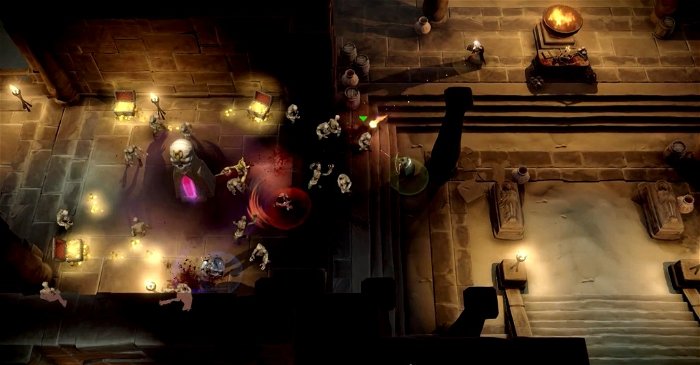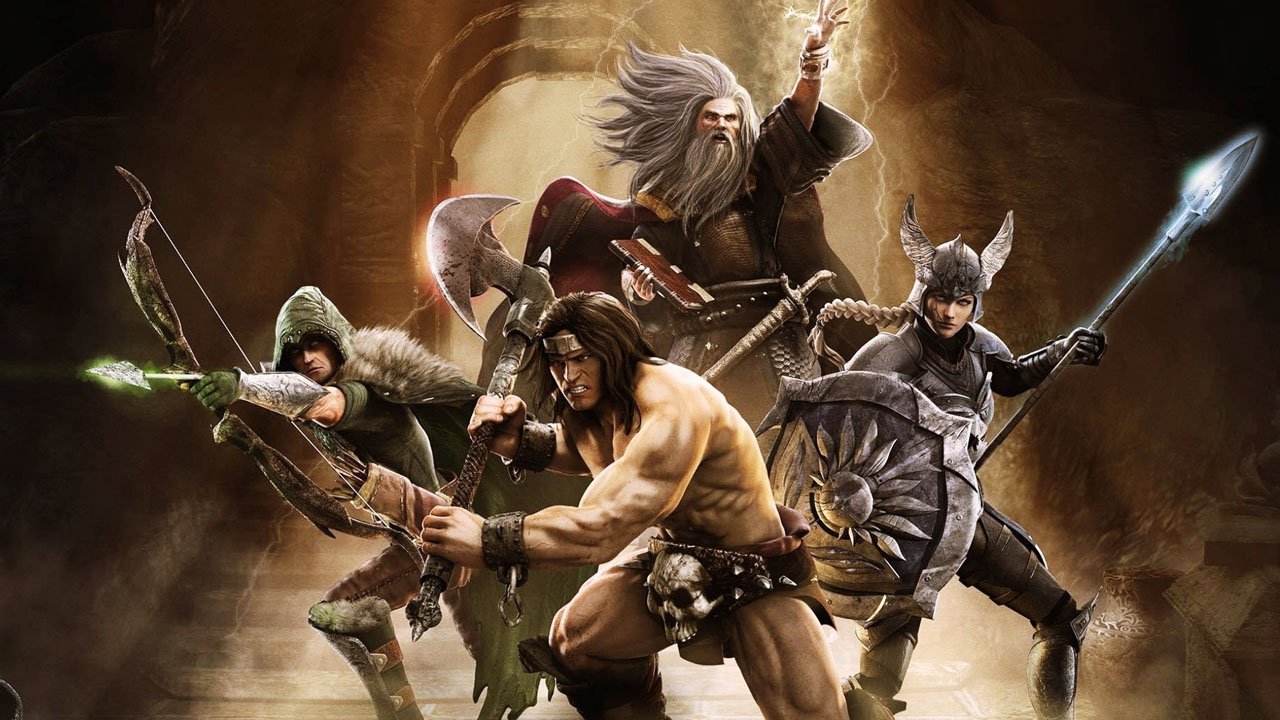There’s something to be said for an arcade-style button-masher. I barely spent any time in my local arcade, due to my largely rural upbringing and the short lifespan of mall arcades (they were all but extinct when I went to university). However, such games have a certain freedom to them – they’re repetitive, but honest in their presentation and addictive. Why else would you feed quarters to a machine that usually broke down or froze? This game captures some of that feel well. Where it not for some design flaw, it would be a truly stellar game. I didn’t play the original Gauntlet, but I am familiar enough with it to know what to expect – and I expected somewhat more overall.

The plot is traditional arcade fare – enter a dungeon, find the three shards of a mystical sword, acquire wealth. There’s little to talk about and little need to worry, there are no twists you won’t be able to see coming. The character designs and personalities, however, are made distinct through the brief dialogues with the mocking narrator, Morag, and responses to various situations. They’re archetypal characters – the muscular Conan-esque warrior, a scarred and grim Valkyrie, the bearded and arrogant wizard, and the flippant, green-clad Elf. They even compliment and insult each other over the course of co-op play, adding a sense of camaraderie that I appreciated.
Play-wise, each character has their own style and motif, making use of the left and right mouse buttons, spacebar, and shift. These moves enable various strategies to allow any character to survive encounters – The Valkyrie can use her shield to block attacks and reflect projectiles and can use a spear-charge to move about quickly and kill lines of enemies, the Elf’s arrows are fast but do no damage to enemy spawners, requiring him to use his Bombs to detonate them. Each moveset has distinct utility, and require different playstyles.
The odd one out, however, is the Wizard, whose mechanics work decidedly differently – he attacks only with the left mouse button, and can change which attack he uses by pressing any combination of the two other buttons. For example, pressing spacebar twice activates the default fireball, while pressing it once followed right mouse gives you a short-ranged lightning blast. This gives him a huge degree of versatility and allows him to control a battlefield – and, in my experience, makes all of the fights far easier. Balance wise, both the Wizard and the Elf have a far easier time with enemies due to their range, and I found that they required far less finesse; I also found it far harder to find co-op matches when I was playing a wizard.

Co-op is the core idea of the game – or it would be, if it wasn’t so hard to get groups. Everyone seems to play the Wizard, because of his range of abilities and how he can generally chew through everything. Even if you do get a full group, it becomes difficult to keep track of oneself in the mass of enemies. The game scales for multiplayer by adding more foes, and the result leaves the screen crowded and hard to pick out where you are. The camera doesn’t actually focus on you when you’ve got a group, but rather keeps centered in the general area of the party, due to the party being locked to a certain maximum proximity. The result often leads to players getting stuck as they go in opposite directions, or one gets stuck, and adds to the confusion. Quick reflexes are required to fight and it the perspective hinders that in multiplayer.
On top of this, the most glaring flaw is the level design. As good-looking and distinct as everything is, it gets old fast, because the actual scope of puzzles and levels are limited and extremely formulaic. Every level consists of three stages – a longer, initial stage, a hazard stage where an environmental obstacle complicates matters, and an “arena” stage, the last one, where you fight in a small area against hordes of monsters. This gets repetitive quickly, especially since the maps are largely the same. There are three different styles of stages, and you have to go through each three times, in that same pattern above. The distinctions between each stage are minor. There are also three bosses in the game, two of which are actually rather interesting and entertaining fights – the second one, however, is somewhat weak, amounting to a straightforward waiting game for his invulnerability to drop.
The thing is that, this could be a fun arcade-style homage to the original game and a worthy game in its own right, but its lack of variation kills it. Difficulty increases mean more gold and those with achievement fever might want to collect all the items, cosmetic pieces, and special goals, but they’d have to grind over the same levels to do it. The potential is there for some rather ingenious puzzles, for some challenging enemy situations and even some more stage hazards other than the three presented. As such, it feels like you repeat slightly harder versions of the same level three times before you fight a boss, and that doesn’t do the game justice. It also needs some work with the co-op – making it easier to join other players would greatly help, and an option to anchor the camera to your player (or at least enable better, more distinct markers) would be fantastic.
At 20 dollars, this isn’t too bad, but I would have liked more.





